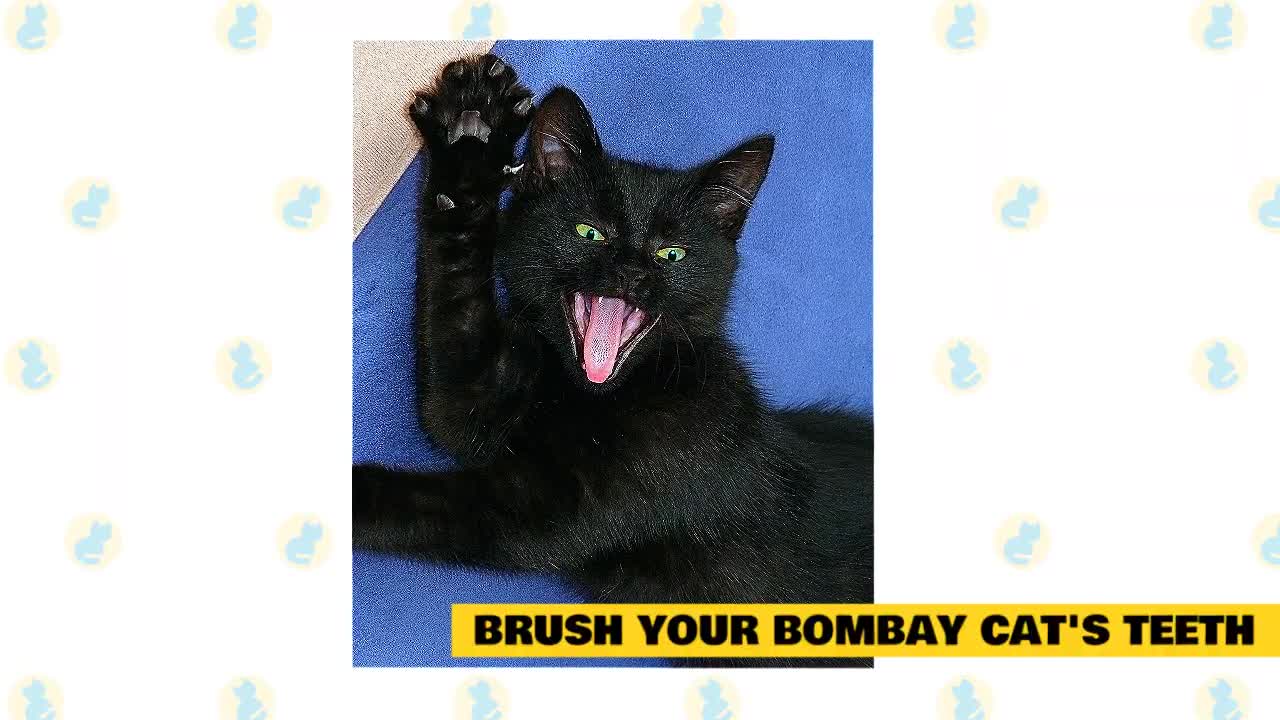Premium Only Content

Bombay Cats 101 : Cat Care
In today's video, we're going to talk about how to take care of your Bombay Cat.
Bombay cats were originally a cross between American shorthairs and Burmese cats. The goal was to get a domestic house cat that looked somewhat like a small panther.
It’s hard to tell what is more captivating about this beauty, the shiny black coat or the golden eyes. The combination is an absolute marvel.
The Bombay cat is muscular, but a deceptively heavy animal. Don’t let the small size deceive you as it could weigh up to 6 to 11 pounds and can live up to 12 to 16 years if given proper care. They could be likened to your typical black leopard as the Bombay walk with a sway similar to them.
These cats are hearty, and grooming them can be easier than grooming a long-haired cat. They are relatively healthy with a few exceptions. Because they are inquisitive, energetic cats, they do need some stimulation to be happy.
Here are some efficient ways on how to take care of your Bombay Cat.
Grooming your Bombay Cat.
Brush your Bombay Cat on occasion.
Bombay cats, with their sleek, soft fur, don't need much brushing. A once-a-week brushing is more than sufficient. Often, just petting is enough to remove the dead hair and help move oils around. A curry brush is good for this cat.
Also, these cats only really need to be bathed when they get into something messy, such as if they go running through the mud outside.
Wipe Bombay cat's eyes regularly.
The Bombay cat is prone to excessive tearing in the eyes, more so than other breeds. Tears can be irritating, so try to wipe down the corner of your cat's eyes at least once a day. Use a soft cloth dampened with warm water.
Clean Bombay Cat's ears.
Bombays, like all cats, need their ears cleaned regularly. Clean them when you notice a buildup of wax on the inside. Ask your vet for a good cleaner, then use a cotton ball or swab moistened with that cleaner to gently bathe the inside of the cat's ears.
Clip Bombay cat's claws.
You also need to trim the cat's claws fairly regularly, such as twice a month or more often as needed. You'll notice when they start getting long. They'll be extra sharp, and the cat will keep getting them stuck in things.
Start by getting your cat used to having its feet handled and its claws extended. Then get it used to the noise of the clippers. You can practice on a piece of spaghetti with the cat nearby.
When it comes time to trim, have the cat in your lap with its head away from you. Lift up one of its paws. Push gently on one of the cat's pads, extending the claw. Before trimming, make sure you can see the quick, the pink nerve and blood vessel inside the nail. Avoid clipping that.
Remember your cat may become impatient. You may need to do its nails in more than one session.
Brush your Bombay cat's teeth.
Brushing your cat's teeth may sound like more than you bargained for when getting a cat. However, clean teeth are essential to a cat's good health, so it's an important step you should take regularly.
Start by getting your cat used to the idea. A couple of times a day, lift up the cat's gums and gently rub them with your finger or a piece of gauze. Once your cat seems okay with this step, you can move on to brushing. Use a toothbrush and toothpaste specifically designed for cats.
Give your cat a taste of the toothpaste. Apply a small amount to the toothbrush. Using the toothbrush, apply the paste to the teeth, reaching to the teeth in the back. Rub it in gently.
While you're brushing, look to see if your cat's gums seem pink and healthy. Also, check for any mouth wounds or broken teeth.
Maintaining your Bombay Cat's Health.
Pick a Bombay cat from a good breeder.
If you're getting your cat from a breeder, make sure you choose a good one. The cats should be bred in the person's home and handled often. It can help to visit and see the place, as well as meet the kitten's mom and dad to see what they're like.
Ask for references and for a health guarantee in case the cat is born with congenital issues.
Watch for breathing difficulties.
This cat has a relatively short snout. Because of that, the breed is more prone to problems with breathing, such as brachycephalic airway syndrome. In mild cases, you may notice your cat breathes loudly or snores. In more severe cases, you may notice your cat only breathes through its mouth, tires easily, and may even pass out after playing.
copied...!
-
 LIVE
LIVE
PudgeTV
3 hours ago🔵 Mod Mondays Ep 65 | The Italian CEO on Rumble | Business, Pizza & Streaming
90 watching -
 2:22:49
2:22:49
Robert Gouveia
5 hours agoArrest Gavin Newsom?? Insurrection Act! Mexico's Reconquista! Deportation Hearing!
34K38 -
 LIVE
LIVE
House of Jacobs
1 hour agoElden Ring NightReign Zero Skill, Full Send
33 watching -
 LIVE
LIVE
Fragniac
3 hours ago🔴 SPLITGATE 2 *NEW* BATTLE ROYALE w/ The @BrrrapPack ❗
103 watching -
 53:24
53:24
The Daily Signal
2 hours ago $0.44 earned🚨 BREAKING: Democrats Call for Nationwide Mobilization, U.S. Marines Deployed to Los Angeles
18.8K2 -
 27:43
27:43
Scary Mysteries
12 hours agoColorado’s 5 DARKEST Mysteries
11.9K2 -
 1:39:04
1:39:04
LIVE WITH CHRIS'WORLD
8 hours agoLIVE WITH CHRIS’WORLD - California is HELL On Earth | Americas Reaction
12.3K3 -
 49:24
49:24
Patriots With Grit
2 hours agoTrump's Hitman? | Vem Miller
11.7K2 -
 1:24:55
1:24:55
Alternatively - Formerly Conspiracy Pilled
5 hours agoLuke Part 2: Wilderness Training
17.8K2 -
 LIVE
LIVE
Spartan
4 hours agoPro Halo Player
14 watching